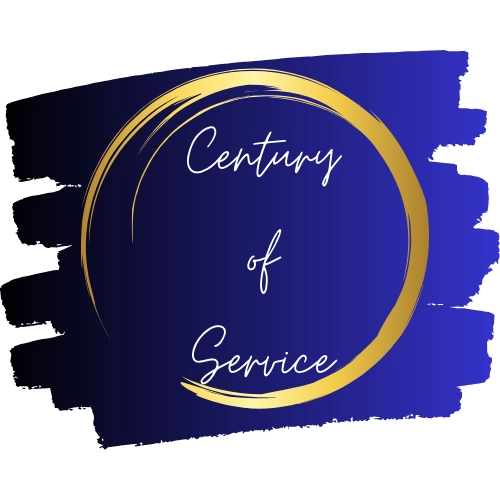

Evacuating American Citizens as Civil War Engulfs Freetown
Mary Annette “Ann” Wright was born in Oklahoma, grew up in Arkansas, and served in the U.S. Army before joining the Foreign Service in 1987. She was Deputy Chief of Mission in Sierra Leone in 1997 when fighting in the country’s civil war reached the capital of Freetown. While her ambassador was away, the rebels of the Revolutionary United Front (RUF) began committing atrocities across the city. Wright and her team decided it was time to evacuate American citizens. It would be the largest evacuation since the Vietnam War.
“The RUF was very brutal in its taking of Freetown,” Wright recalled. “Lots of people were killed, assaulted and beaten up. Because of their collusion with the RUF, the military made no effort to control the violence.” Wright asked Washington to send a plane to evacuate Americans and non-essential embassy staff, but the State Department instead decided that a Marine Expeditionary Unit aboard the U.S.S. Kearsarge off the coast of the Congo would come to the rescue. It could move more people, but would not arrive for three days.
“The RUF was very brutal in its taking of Freetown. Lots of people were killed, assaulted and beaten up. Because of their collusion with the RUF, the military made no effort to control the violence.”
Ann Wright
The embassy put out announcements on Voice of America and the BBC that American citizens wishing to evacuate should meet on Friday morning at the Mammy Yoko, a hotel near the end of the Freetown peninsula with the key advantage of having a spot for landing helicopters. “Well, of course when any announcement like that goes out,” Wright said, “a lot of people decide if the Americans are evacuating, then we had better get out too.” When they began the evacuation at 6:00 AM on Friday, there were 5,000 people of forty different nationalities waiting at the Mammy Yoko Hotel, all looking to join Wright in leaving Freetown.
Meanwhile, Washington had received reports that the rebels were planning to kidnap members of the international community. Wright was instructed to shut down the embassy and evacuate everyone, including our friends and allies. When Wright asked Washington how she should prioritize people – after all, the Kearsarge’s official capacity was only 700 people – Washington told her to use her best judgment. The team managed to fly 900 evacuees out to the ship by the end of that long first day, and the Kearsarge steamed off to drop them in nearby Conakry in Guinea.
But before the Kearsarge even began offloading evacuees in Conakry, Wright received a call from Washington. She was told that some American citizens arrived late and were left behind. The officials in Washington continued to ask her to pick up the children of then-Vice President Al Gore’s nanny. The nanny was from Sierra Leone; her children had been visiting their grandmother in Freetown and were now stranded.
“And you forgot the orphans,” the caller then told Wright.
“The orphans?” Wright asked.
An American missionary in Sierra Leone ran an orphanage and wanted to evacuate twenty orphans for adoption by American families. This missionary did not have legal custody of these orphans, but they did have friends in the U.S. Congress, so Wright was told to bring these children out.
At daybreak the next morning, Wright and the U.S. Marines were back in Freetown flying people out to the Kearsarge from the helipad at the Mammy Yoko Hotel. They evacuated another 300 people that day, including the orphans, the children of the Gore family’s nanny, Americans who had arrived too late for the initial evacuation, and local government officials who now feared for their safety with rebels closing in.
On that second evening, just after the last of the evacuees and all the embassy staff except Wright had left the ship, she received a desperate call from the manager of the Mammy Yoko Hotel. Rebels were now shelling the hotel, the upper floors were ablaze, and 800 people were sheltering in the basement, including wounded Nigerian peacekeepers who had been trying to defend the place. Wright and the Marines returned again, this time under hostile fire. The Marines and an Army Special Forces detachment left the Kearsarge in hovercraft carrying armored personnel carriers and secured an evacuation site on the beach near the hotel. People began flocking from the Mammy Yoko on foot and from Freetown by car to be evacuated.
Before going ashore, Wright spoke with the captain of the Kearsarge. “‘Give me an idea – what is the maximum that we can put on the ship before we sink this thing?’ and he said, ‘You won’t ever sink it but the problem is the support facilities,’ – the toilets, the food and all that stuff. And he said, ‘1,100 at the most, but just keep in touch with me minute by minute … and we’ll do what we have to.’”
With Wright as the only embassy employee left to check passports and clear evacuees, the group managed to get 1,300 more evacuees safely on the ship, saving more than 2,500 people over three days. Ann Wright’s efforts earned her the State Department’s award for heroism.
See more in Ann Wright’s oral history.
